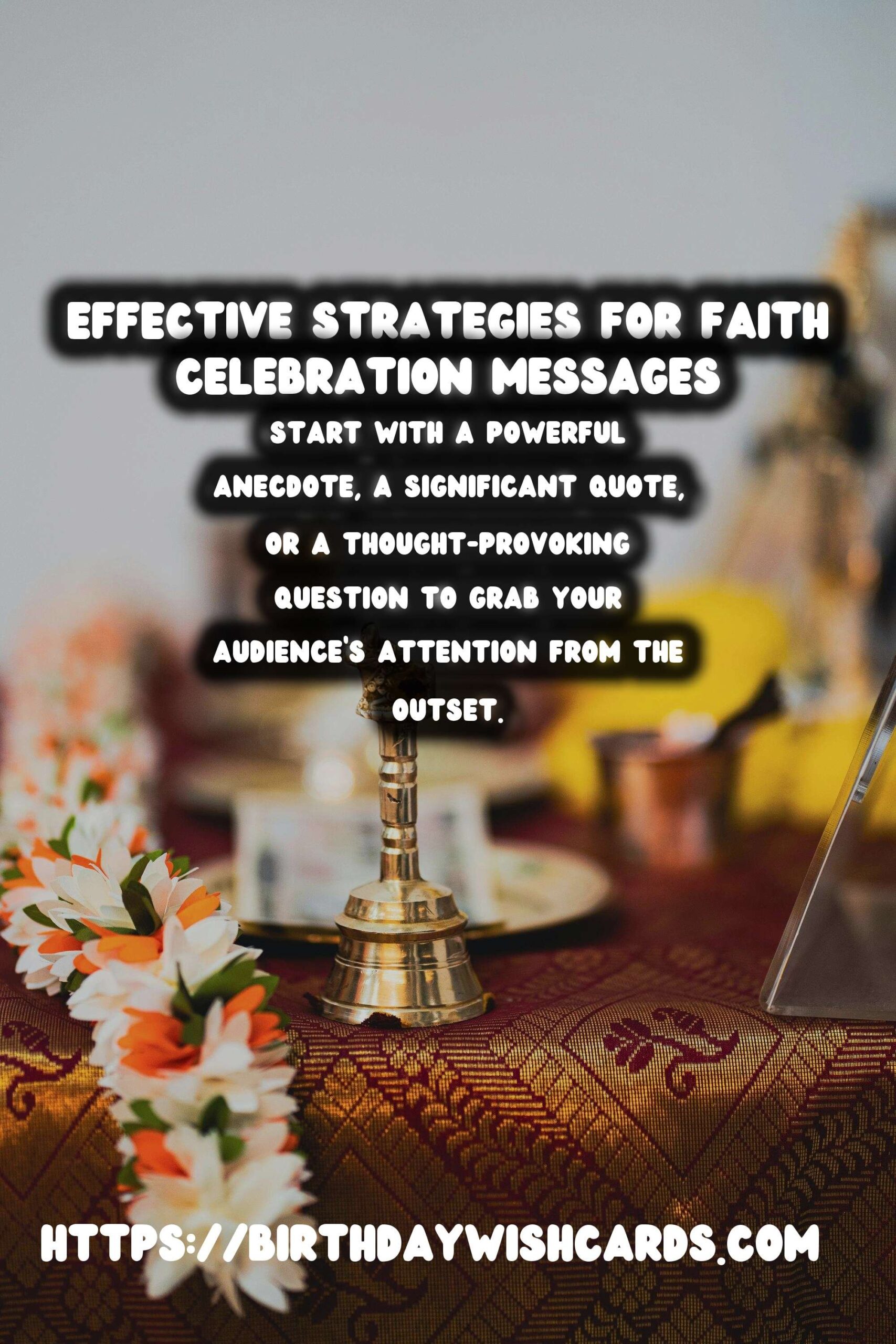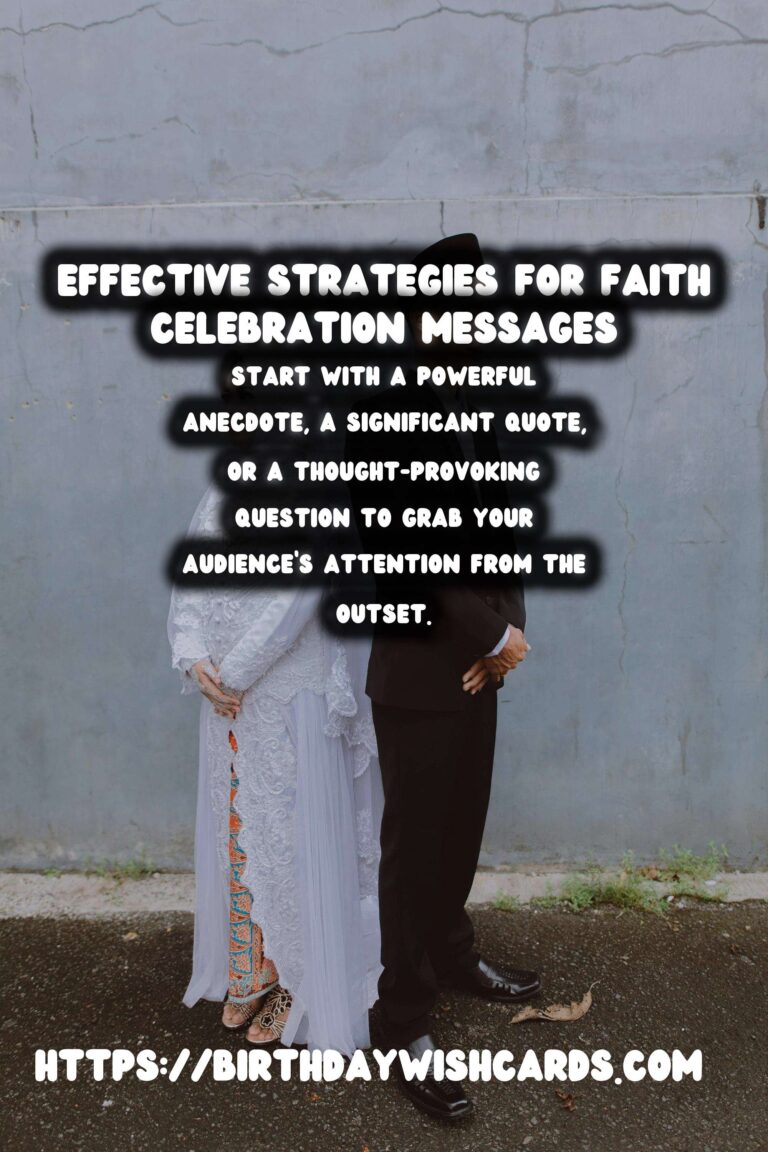
Planning a faith celebration message is more than just drafting a few words; it’s about crafting a heartfelt message that resonates with your audience. Whether you’re addressing a small congregation or a large gathering, the goal is to leave a lasting impression.
In this article, we will explore effective strategies and tips to ensure your faith celebration messages are impactful and memorable.
1. Understand Your Audience
The first step in planning your faith celebration message is to understand who you are addressing. Every audience has different demographics, beliefs, and experiences that shape their understanding of faith.
Ask yourself:
- What age group is my audience?
- What are their spiritual backgrounds?
- What kind of experiences have shaped their faith journey?
By answering these questions, you can tailor your message specifically for your audience, making it more relatable and engaging.
2. Set a Clear Purpose
A faith celebration message should have a clear purpose. Are you celebrating a specific event, like a holiday or an anniversary? Are you seeking to inspire, teach, or encourage your audience?
Defining your purpose will guide the content of your message, ensuring that it stays focused and impactful.
3. Choose Relevant Scriptures
The inclusion of scripture can deepen the spiritual significance of your message. Choose relevant verses that align with your theme and can provide inspiration or instruction to your audience.
Consider these tips when selecting scripture:
- Ensure the scriptures are easy to understand.
- They should relate directly to the theme of your message.
- Consider using various translations to capture the essence of the verses.
4. Craft an Engaging Opening
Your opening sets the tone for your entire message. Start with a powerful anecdote, a significant quote, or a thought-provoking question to grab your audience’s attention from the outset.
Examples of effective openings include:
- A personal story that illustrates the message.
- A relevant current event that connects to your theme.
- A short, impactful video or audio clip.
5. Create a Structured Outline
Your message should have a clear structure that takes your audience on a journey. A typical outline includes:
- Introduction: Introduce your topic and establish a connection with your audience.
- Main Body: Present your key points, supporting them with scripture, stories, and examples.
- Conclusion: Summarize your message and provide a call to action.
6. Use Relatable Stories
Stories are powerful tools for making messages relatable and memorable. They evoke emotions and can help to illustrate your points more vividly.
When sharing stories, consider:
- Personal anecdotes that illustrate your faith journey.
- Testimonies from others that reflect the theme of your message.
- Fictional stories or parables that highlight spiritual lessons.
7. Incorporate Visuals
Visual aids, such as slideshows or videos, can enhance your message and make it more engaging. Visuals help to break up text and can illustrate complex ideas more clearly.
When using visuals, ensure they are:
- High quality and relevant to your message.
- Used sparingly to avoid distraction.
- Accompanied by clear explanations or context.
8. Use Clear and Concise Language
When crafting your message, use language that is clear and concise. Avoid overly complex words or phrases that may confuse the audience.
Tips for clarity include:
- Using short sentences and paragraphs.
- Avoiding jargon or theological terms unless necessary.
- Defining any key terms you choose to use.
9. Prepare for Questions and Interactions
Encourage interaction and be open to questions from your audience. This not only enhances engagement but also allows you to clarify any misunderstandings.
To facilitate interaction:
- Consider having a Q&A session after your message.
- Encourage attendees to share their thoughts or experiences.
- Provide simple ways for your audience to reach out with questions afterward.
10. Practice Your Delivery
Practice is key to delivering your message effectively. Rehearse your message several times to become familiar with the content and timing.
Consider the following during practice:
- Pay attention to your tone of voice and body language.
- Practice in front of a small group for feedback.
- Record yourself to identify areas for improvement.
11. Create a Memorable Closing
Your closing is just as important as your opening. Aim to leave your audience with a strong impression that encourages them to reflect on your message.
Strategies for a memorable closing include:
- Summarizing key points succinctly.
- Providing a memorable quote or story.
- Encouraging a call to action – something specific your audience can do in response.
12. Follow Up Post-Celebration
After the celebration, consider following up with your audience. Send out an email recap of the message, include resources, and encourage further discussion.
Following up can help reinforce the message and foster community within your congregation.
Conclusion
Planning faith celebration messages that leave a lasting impression is a skill that can be developed. By understanding your audience, setting clear intentions, using relatable content, and delivering with clarity, you can create powerful messages that resonate deeply.
Remember, the goal is to inspire and uplift – your words can have the power to transform hearts and minds.
Planning a faith celebration message is more than just drafting a few words; it’s about crafting a heartfelt message that resonates with your audience. Start with a powerful anecdote, a significant quote, or a thought-provoking question to grab your audience’s attention from the outset.

